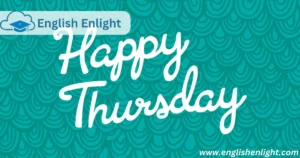When seeking feedback or opinions, saying “please let me know what you think” can sometimes feel repetitive, especially in professional or personal communication. Varying your phrasing can make your writing more engaging and adapt to different tones.
Here are 25 alternatives, along with examples of how you can use each in context.
1. I’d Love to Hear Your Thoughts
This is a more personable and open way to ask for feedback. It shows you’re eager to hear from the other person.
Scenario Example:
Subject: Feedback on Marketing Proposal
Dear Daniel,
I’ve attached the marketing proposal for next quarter’s campaign. I’d love to hear your thoughts on the strategy and whether you think it aligns with our goals.
Looking forward to your input!
Best regards,
Jons
2. Your Feedback Is Appreciated
This phrase adds a polite and appreciative tone, indicating that the feedback will be valued.
Scenario Example:
Subject: Website Design Mockups
Hi Daniel,
I’m sending over the mockups for the website redesign. Your feedback is appreciated, especially regarding the layout and user experience.
Please let me know if there’s anything you would like adjusted.
Best regards,
Jons
3. Let Me Know Your Thoughts
A simple and casual alternative, this phrase works well in both professional and informal settings.
Scenario Example:
Subject: Draft of Monthly Report
Dear Daniel,
I’ve attached the draft for the monthly performance report. Let me know your thoughts on the data presentation and any revisions you think are needed.
Thanks in advance for your input!
Best regards,
Jons
4. I’m Interested in Your Opinion
This version is a bit more direct and formal, and it conveys that the recipient’s opinion holds weight.
Scenario Example:
Subject: Product Development Proposal
Hi Daniel,
I’ve drafted a new proposal for our product development process. I’m interested in your opinion on whether this aligns with our long-term objectives and any suggestions you might have.
Let me know if we should discuss further.
Best regards,
Jons
5. Please Share Your Thoughts
This is a more neutral way to request feedback, suitable for formal and casual settings alike.
Scenario Example:
Subject: Team Meeting Agenda

Dear Daniel,
Attached is the agenda for our upcoming team meeting. Please share your thoughts on the order of topics and whether we should add any more discussion points.
Looking forward to hearing from you.
Best regards,
Jons
6. Feel Free to Share Your Feedback
Using “feel free” makes the request less formal and invites an open response.
Scenario Example:
Subject: Social Media Strategy
Hi Daniel,
I’ve outlined our new social media strategy for the next quarter. Feel free to share your feedback on the content schedule and any additional ideas you think we should include.
Best regards,
Jons
7. I Value Your Input
This phrase emphasizes the importance of the recipient’s perspective and adds a personal touch.
Scenario Example:
Subject: New Employee Training Program
Dear Daniel,
We’ve drafted a new training program for incoming employees. I value your input on whether it covers all the necessary topics and if there’s anything else we should add.
Looking forward to hearing from you.
Best regards,
Jons
8. Let Me Know If You Have Any Suggestions
This phrase is often used when you’re looking for constructive feedback or improvements.
Scenario Example:
Subject: Annual Budget Proposal
Hi Daniel,
Attached is the annual budget proposal for the next fiscal year. Let me know if you have any suggestions or changes before we finalize it.
Best regards,
Jons
9. Would Love Your Take on This
This casual and friendly phrase is perfect for informal or close professional relationships.
Scenario Example:
Subject: New Campaign Ideas
Hey Daniel,
I’ve come up with a few new ideas for our upcoming campaign. Would love your take on this to see if you think any of these are worth pursuing.
Let me know what you think when you get a chance.
Best,
Jons
10. What Are Your Thoughts?
This is a direct and neutral alternative, suitable for any context.
Scenario Example:
Subject: Client Presentation Outline
Dear Daniel,
I’ve put together an outline for the upcoming client presentation. What are your thoughts on the content flow and whether we should include more visuals?
Thanks in advance!
Best regards,
Jons
11. Please Give Me Your Feedback
A more formal phrase, often used when the feedback is critical for decision-making.
Scenario Example:
Subject: Proposal for New Office Space
Hi Daniel,
I’ve attached a proposal for the new office space. Please give me your feedback on whether it meets our needs and fits within the budget.
Best regards,
Jons
12. I’m Open to Your Suggestions
This phrase shows openness and invites creative input from the other person.
Scenario Example:
Subject: Plan for Team Building Event
Dear Daniel,
I’ve outlined a plan for the upcoming team-building event. I’m open to your suggestions on activities and scheduling to ensure we meet everyone’s preferences.
Let me know your thoughts when you can.
Best regards,
Jons
13. Do You Have Any Thoughts?
This phrase is casual and encourages an open discussion, without putting too much pressure on the recipient.
Scenario Example:
Subject: Potential New Client Approach
Hey Daniel,
I’ve been thinking about how we should approach our potential new client. Do you have any thoughts on how we can stand out during the pitch?
Let me know your ideas!
Best,
Jons
14. What Do You Think?
This is a concise and straightforward phrase that fits in both professional and casual settings.
Scenario Example:
Subject: Revised Project Timeline
Dear Daniel,
I’ve updated the project timeline based on the latest developments. What do you think? Does this new schedule align with our goals?
I’m looking forward to hearing your feedback.
Best regards,
Jons
15. I’d Appreciate Your Thoughts
This phrase adds a tone of respect and appreciation for the recipient’s feedback.
Scenario Example:
Subject: Revised Pricing Strategy
Hi Daniel,
We’ve made some adjustments to our pricing strategy. I’d appreciate your thoughts on whether this will be competitive in the current market and if any tweaks are necessary.
Thanks in advance for your input!
Best regards,
Jons
16. I’m Keen to Hear Your Feedback
Using “keen” adds a sense of eagerness to hear back, creating a tone of urgency or anticipation.
Scenario Example:
Subject: Website Redesign Proposal

Dear Daniel,
I’ve attached the proposal for the website redesign. I’m keen to hear your feedback on the overall design and functionality improvements.
Please let me know your thoughts as soon as possible.
Best regards,
Jons
17. Let Me Know Your Opinion
This is a simple and effective phrase, suitable for both professional and personal settings.
Scenario Example:
Subject: Proposal for New Product Line
Dear Daniel,
I’ve attached the proposal for our new product line. Let me know your opinion on whether we should move forward with this idea and if you have any suggestions.
Best regards,
Jons
18. I’d Like Your Take On This
This phrase is more casual and works well in collaborative environments.
Scenario Example:
Subject: New Marketing Strategy
Hey Daniel,
I’ve drafted a new marketing strategy for the upcoming quarter. I’d like your take on this to see if we’re on the right track and if you have any additional ideas to consider.
Looking forward to hearing from you.
Best,
Jons
19. Your Thoughts Would Be Helpful
This formal phrase emphasizes the value of the recipient’s input.
Scenario Example:
Subject: Departmental Restructuring Plan
Dear Daniel,
I’ve outlined a restructuring plan for the department. Your thoughts would be helpful in determining whether this approach will increase efficiency and meet our objectives.
Please share your feedback when convenient.
Best regards,
Jons
20. Do You Have Any Feedback?
A simple, direct way to ask for input.
Scenario Example:
Subject: Client Satisfaction Survey Draft
Hi Daniel,
I’ve attached the draft for the client satisfaction survey. Do you have any feedback on the questions or format before we send it out?
Best regards,
Jons
21. I’d Be Grateful for Your Feedback
This phrase adds a polite tone, often used when the feedback is critical or when you’re seeking expert opinion.
Scenario Example:
Subject: Legal Contract Review
Hi Daniel,
I’ve attached the contract for review. I’d be grateful for your feedback on whether everything is in order and if there are any clauses we should amend.
Thank you in advance for your time!
Best regards,
Jons
22. Let Me Know If You Have Any Thoughts
This casual phrase opens the door for any kind of feedback, without putting too much pressure.
Scenario Example:
Subject: Project Timeline for Client B
Dear Daniel,
I’ve put together a proposed timeline for Client B’s project. Let me know if you have any thoughts on the deadlines or deliverables.
Thanks!
Best regards,
Jons
23. I’d Like to Hear Your Thoughts
This polite phrase expresses a genuine interest in the other person’s perspective.
Scenario Example:
Subject: Design Changes for Brochure
Hi Daniel,
We’ve made some updates to the design for the new brochure. I’d like to hear your thoughts on whether these changes enhance the overall appeal.
Looking forward to your feedback!
Best regards,
Jons
24. What’s Your Opinion on This?
A direct and concise alternative, perfect for getting straight to the point.
Scenario Example:
Subject: New Service Offering Proposal
Dear Daniel,
I’ve attached the proposal for our new service offering. What’s your opinion on this? Do you think it fits within our company’s objectives?
Best regards,
Jons
25. Could You Provide Your Input?
This is a polite, formal way to request feedback, suitable for professional settings.
Scenario Example:
Subject: Employee Onboarding Process
Dear Daniel,
I’ve drafted a new onboarding process for our employees. Could you provide your input on whether this approach will help new hires transition smoothly?
Thanks for your time!
Best regards,
Jons
Pros and Cons of Using Different Alternatives
Pros:
- Variety: Using different phrases avoids redundancy and keeps communication engaging.
- Tone: Different alternatives can adjust the tone of the message, making it more formal, casual, or friendly.
- Clarity: Some phrases are more direct, helping to ensure the recipient knows exactly what kind of feedback you’re seeking.
Cons:
- Over-complication: Using overly complex alternatives in simple contexts can confuse the reader.
- Tone Misalignment: Choosing the wrong phrase for the tone of the conversation can create an unintended impression, such as sounding too casual in formal contexts.
FAQs About “Please Let Me Know What You Think”
1. What are the most formal alternatives to “Please let me know what you think”?
Formal alternatives include phrases like “Your feedback is appreciated”, “I value your input”, or “Could you provide your input?” These maintain a professional tone.
2. Can I use these alternatives in casual settings?
Yes, but casual alternatives like “Would love your take on this” or “Let me know if you have any thoughts” may be more appropriate in informal settings.
3. How do I choose the best alternative?
Consider the tone of your message and the relationship with the recipient. Formal options work well in professional contexts, while casual alternatives are best for friends or colleagues you know well.
4. Can I mix different alternatives in one email?
Yes, you can use multiple phrases if the situation requires varied responses. For example, you could say, “I’m open to your suggestions” and follow it with “Feel free to share any additional thoughts.”
5. Should I avoid using “Please let me know what you think” altogether?
No, the phrase is perfectly fine to use, but varying your language can make your communication more engaging and dynamic.
Conclusion
In conclusion, having a range of alternatives to “Please let me know what you think” enhances your communication by adding variety, clarity, and flexibility. Whether you’re in a professional setting requiring a formal tone or engaging with someone more casually, using the right phrase can improve the tone of your message and show consideration for the recipient.
Formal options such as “I value your input” or “Your feedback is appreciated” are ideal for work-related contexts, while casual alternatives like “Let me know if you have any thoughts” suit informal conversations. The key is to be mindful of the relationship and the situation, ensuring that the tone is appropriate and the message is clear.
By alternating between these phrases, you avoid sounding repetitive and can better convey the importance of the feedback you’re requesting. Ultimately, thoughtful communication strengthens connections and fosters more productive conversations.















